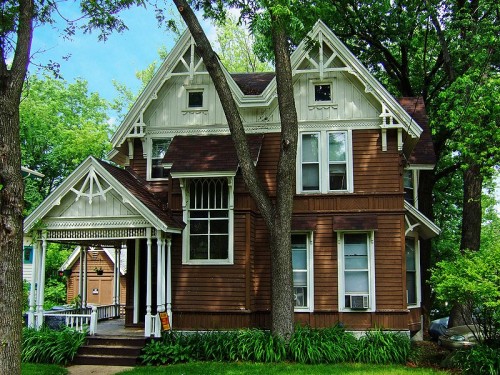 Believe it or not, not all evangelicals attend a megachurch. In fact, if you check out this top graph from the Hartford Institute for Religion Research, you'll see that 59 percent of churches nationwide have an attendance of seven to 99 people.
Well, it looks like that was a shock to the Denver Post and the Associated Press.
Believe it or not, not all evangelicals attend a megachurch. In fact, if you check out this top graph from the Hartford Institute for Religion Research, you'll see that 59 percent of churches nationwide have an attendance of seven to 99 people.
Well, it looks like that was a shock to the Denver Post and the Associated Press.
Let's start with the Post.
Megachurch, meet microchurch.
Growing numbers of Coloradans believe the tiny house church, also called a simple church or an organic church, might be the mightier transformer of Christian lives.
Overall, the story is fine and understandable, considering Barna is releasing some data suggesting a new trend, and in the last few years, I've been seeing more books from Christian publishers on the idea. What frustrates me is the portrayal that this is a new idea since the days of the early Christians.
Here's some input from tmatt, based on his years reporting and teaching: "The key, for me, is that the house church movement came to the USA in a very major way -- from Korea, primarily -- in about 1990 or so. It was a big deal, but slightly old, when I was at Denver Seminary in 1991-93." The reporter Electa Draper quotes someone who says that it was a trend in the 1960s, but even that's probably not the only time the trend has waxed and waned.
It's pretty unclear from the picture's caption (likely written by a copy editor or photographer) whether this group's Holy Communion is the waffles and whipped cream, but the story clears that up. Here's the description of one church Draper attended:
After breaking bread and talk of record-size trout, the upcoming Heaven Fest concert, Zumba dance class, Rockies baseball and hot weather, the group moved from the kitchen to the living room for more than an hour of intense Bible study and prayer.
Communion was self-serve: small plastic cups of grape juice and broken saltine crackers.
The group, which includes an administrative assistant, a real-estate professional and a medical receptionist, prayed intensely for a new job for their friend, an unemployed marketing executive.
What does it mean to pray "intensely"? How do you decide if someone's prayer is intense?
If I can nitpick a little bit, she writes, "These homemade churches are easy to find because of online directories." I'll play devil's advocate: Do people really find these churches because they found them on the Internet? Or are do these gatherings originate based on word-of-mouth?
On a more general note, the story doesn't really address the reasons why people choose not to go to a house church/simple church/organic church. For instance, how do you keep something like this going? Is there money involved? Logistically, who pulls things together and makes sure no one is taken advantage of?
Yesterday, the Associated Press released a similar story by Linda Stewart Ball on people who attend house churches.
They say skip the sermons, costly church buildings and large, faceless crowds. House church is about relationships forged in small faith communities.
In general, house churches consist of 12 to 15 people who share what's going on in their lives, often turning to Scriptures for guidance. They rely on the Holy Spirit or spontaneity to lead the direction of their weekly gatherings.
Who says that last sentence? Aren't some house churches directed by a chosen leader?
They are more commonly seen in countries where Christianity is not the dominant religion. Organizers say they're just starting to take off in the U.S.
A study by the Barna Group, a firm specializing in data on religion and society, estimates that 6 million to 12 million Americans attend house churches. A survey last year by the Pew Forum found that 9 percent of American Protestants only attended home services.
Again, who says this? I'm guessing the first sentence might be true; I believe house churches have been pretty common in Communist countries where churches are regulated by the state. But they are just starting to take off in the U.S.? Who says so? (Also, why does the Denver Post quote the same Pew survey saying attendance is at 7 percent while the AP says 9 percent?) Here's the AP's Dallas connection:
In Texas, home to several megachurches, the house church movement is beginning to catch on, judging from the chatter on social networking sites and interest in a national house church conference organized by House2House Ministries held in the Dallas area in recent years.
How big were these conferences exactly? Did the organizers indicate any irony of gathering numbers of people for a conference about simple churches? On a personal note, I'm seeing a growing number of churches offer webcasts of their Sunday sermons. Are they intentionally or unintentionally starting house churches connected to or disconnected from their own church? Is it too much to ask people to drive 20 minutes or whatever to physically attend a church? What is lost and gained in those cases? These are the types of questions that emerging technology and social media might create.
Still, the stories might also point out that this trend is not sweeping change in American religion. Remember that little chart I referred to earlier? The same study suggests that 50 percent of churchgoers attend congregations of 350 people or more. Context says a lot.
